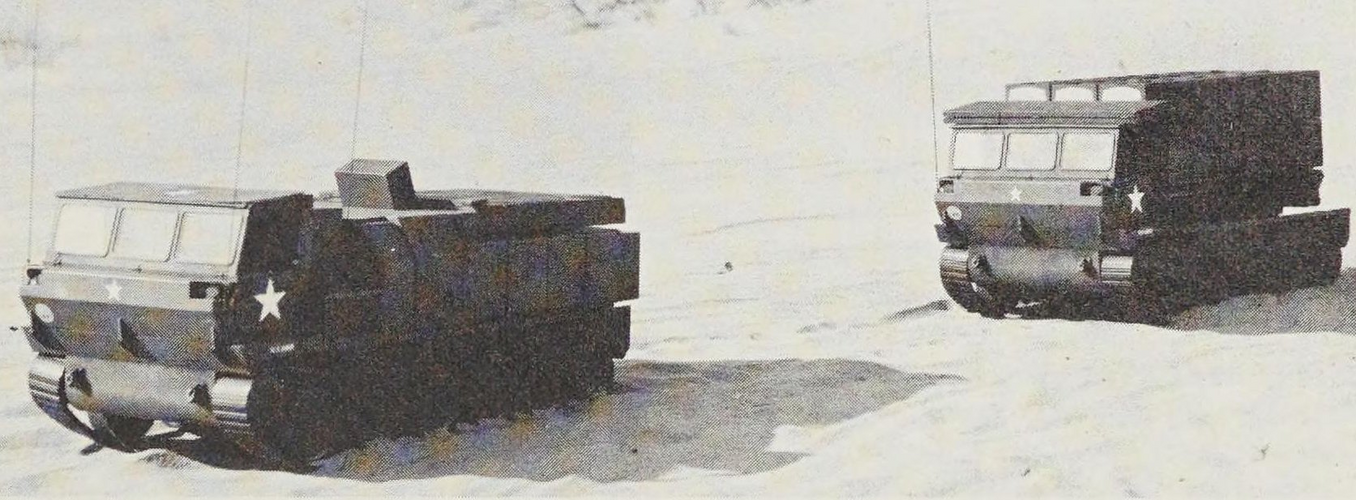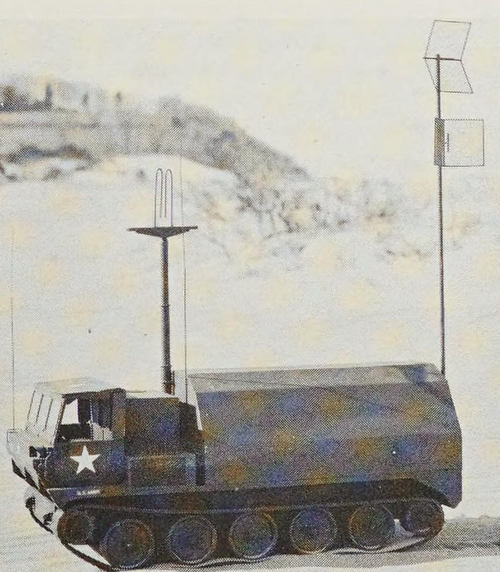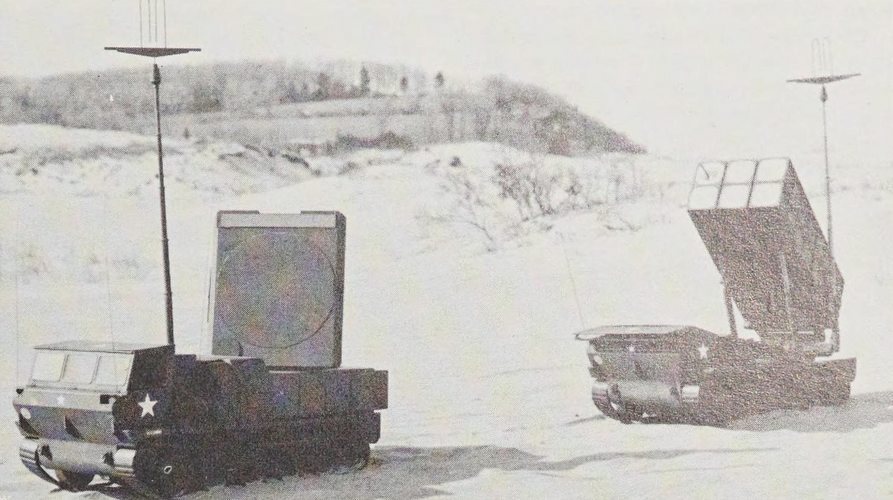Forest Green
ACCESS: Above Top Secret
- Joined
- 11 June 2019
- Messages
- 9,467
- Reaction score
- 17,276
??Did they lose the side arrays?

A visualization of OTH which could be expanded to CEC based detection for ground TCT/TELs supporting 'pre-launch/boost' tgting.

Absolutely essential. If it's possible they should do it. You can be damn sure China and Russia will if they can.
Beyond 'bullet on bullet': NORTHCOM's new defense plan looks to kill missiles before they launch - Breaking Defense
"The best missile strategy is to destroy the missiles prior to launch. A focus on missile defeat could enable distributed non-kinetic systems with larger magazines and the ability to engage missiles before they can deploy complex decoys, countermeasures, maneuvers or multiple reentry vehicles,"...breakingdefense.com
will pre-boost be returning to the argument..controversial
The commands’ focus “going forward relies less on kinetic engagement, instead emphasizing non-kinetic means … such as directed energy, electronic attack, high power microwaves, to complement our direct kinetic active defenses.”
Brig. Gen. Frank Lozano reporting on development testing of the LTAMDS in a new two phased/wave approach :-Breaking Defense News report on this week’s Space and Missile Defense Symposium in Huntsville, Ala., Army Col. Chris Hill, project manager of the Integrated Fires Mission Command Project Office briefing
Anticipates fielding its first C2, Integrated Battle Command System (IBCS) in 2024. The Army then plans to begin rolling out IBCS to other Patriot units at a rate of two battalions per year. Then in the 2027 timeframe is when LTMADS [radar] should come on board.
Also mentioned was the Army passive Long Range Persistent Surveillance (ALPS), Lockheed Martin’s Remote Interceptor Guidance-360 (RIG–360) for Patriot PAC-3 integrated with IBCS, Sentinel A3 and A4 radars and the Dynetics' delayed IFPC Inc 2 prototypes.

Tying it together: Army eyes evolving test plan new capabilities bound for Guam - Breaking Defense
The service anticipates fielding its first Integrated Battle Command System (IBCS) in 2024, a C2 system that will be a centerpiece for the air defense effort.breakingdefense.com


Raytheon saying the new 'GhostEye' LTAMDS radar $130 million each, hoping foreign sales might bring cost down.
https://insidedefense.com/daily-new...amds-orders-tandem-armys-first-production-run


Raytheon was contracted in 2019 to build an initial six radars, all of which have been produced and are now undergoing tests. The declaration of an OC level by the end of 2023 will culminate with ongoing training and soldier-conducted operational assessments.
Achieving an Operational Capability does not mean that work on the radar ceases. The testing regime continues with demanding environmental and mobility qualifications along with further integration and ‘system of systems’ evaluations. Upon completion, the radar will achieve Operational Capability in support of an Urgent Material Release.
LTAMDS will replace the existing AN/MPQ-53/65 radars used by the Army’s Patriot SAM systems. The new radar works with existing PAC-2 GEM-T and PAC-3 MSE interceptors while having the growth potential to work with new effectors as they become available.
The international community is also taking notice. Twelve countries have shown significant interest in LTAMDS. Poland has become the first international customer for the radar, approving a letter of acceptance on 5 September to expand its Wisla air defence programme with 12 LTAMDS systems.



Patriot replacement radar defeats cruise missile in Raytheon test
The Army's Lower Tier Air and Missile Defense Sensor enabled the intercept of a cruise missile target in a developmental test ahead of first unit fielding.www.c4isrnet.com

I think he's referring to rotate to emplace which it does. It isn't functionally a rotator but uses three staring arrays with the "big" array covering the primary threat sector.If it rotated why would you need three arrays?
LTAMDS is an C-Band Radar, SPY-6 is S-band. However, AMDR (SPY-6) is "Dual-band". The first 12 radar sets will be AMDR-S band only, and continue to use SPQ-9B for X-band use. Set 13 and beyond will feature AMDR-S and X-band in one...Mobility think the opposite TPY-4 is more mobile than the LTAMDS, brochure says it can be transported by a C-130 whereas as far as know no similar claim is made for the LTAMDS and from pic it looks too large to fit inside a C-130?
Problems with the LTAMDS, the only report have seen by Jen Judson Mar 17 Defense News
As far as know Ghost Eye/LTAMDS is not a multiband radar, purely S-band using the same 2 foot cubic S-band RMA building blocks as used in the various SPY-6 radars.
Thanks for your correction and as you say the LTAMDS/Ghost Eye is C- band not S-band.LTAMDS is an C-Band Radar, SPY-6 is S-band. However, AMDR (SPY-6) is "Dual-band". The first 12 radar sets will be AMDR-S band only, and continue to use SPQ-9B for X-band use. Set 13 and beyond will feature AMDR-S and X-band in one...
The Ukrainian Air Force has officially stated that several Russian aircraft, downed in May inside Russian territory were destroyed by the American-made Patriot air defense system. The events that transpired on May 13 involved significant losses for Russian Aerospace forces.All 5 aircraft crashed in Bryansk Oblast, which is deep within Russian territory and located across from Ukraine's Chernihiv Oblast in the northeast. On that day, three Russian Mi-8 helicopters, one Su-34 fighter bomber, and one Su-35S fighter were reportedly lost, with no survivors. Also, there were reports that the Patriot was used to down several Kinzhal (Dagger) hypersonic & Iskander missiles a few days later.
Ukrainian Air Force spokesman Col. Yuri Ihnat at that time hinted at the use of Patriot but he has now confirmed this.
In this video, Defense Updates analyzes how the American Patriot downed Russia’s most advanced aerial assets in Ukraine?
Wasn't it the SAAB fighter radar they they were testing? Actually, I think it was just the antenna with the other HW sourced from elsewhere or internally developed. Lockheed also has its eye on other applications for the Sentinel A4 product line.Dahlgren has been testing a prototype for FXR since last year, a proof-of-concept prototype, which uses what they describe as an "off the shelf antenna designed for military aircraft" modified into an X-band radar prototype. L3 Harris is involved, so I'm wondering if they're using a panel derived from the new Compass Call. It would certainly be light in weight.
I may have missed an update, but I thought SAAB's Navy radar work concerns LCS not FXR. Sentinel isn't an aircraft radar, so I don't believe it or a derivative would be what the article is referring to.Wasn't it the SAAB fighter radar they they were testing? Actually, I think it was just the antenna with the other HW sourced from elsewhere or internally developed. Lockheed also has its eye on other applications for the Sentinel A4 product line.
Yes SAAB supports the LCS program. But in this case, I seem to recall that the Navy specifically chose the front end (antenna) of the new SAAB AESA radar to further its FXR R&D and demonstrate something. Might have to do a bit of digging. Sentinel A4 likewise is a program that LM hopes to be used for broader applications than the current one.I may have missed an update, but I thought SAAB's Navy radar work concerns LCS not FXR. Sentinel isn't an aircraft radar, so I don't believe it or a derivative would be what the article is referring to.
Yes SAAB supports the LCS program. But in this case, I seem to recall that the Navy specifically chose the front end (antenna) of the new SAAB AESA radar to further its FXR R&D and demonstrate something. Might have to do a bit of digging. Sentinel A4 likewise is a program that LM hopes to be used for broader applications than the current one.


European nations team up to buy Patriot missiles in $5.5 billion deal
If all options are exercised, the four states will procure a joint quantity of up to 1,000 Patriot Guidance Enhanced Missiles.www.defensenews.com



Would that drop the unit cost of a PAC3 if it does go through?
https://www.hartpunkt.de/bmvg-will-neue-pac-3-lenkflugkoerper-fuer-patriot-beschaffen/Was surprised as write up says its the PAC-2 GEM-T not the PAC-3
PAC3 is highly specialized in ABM work, GEMT is better for cruise missiles or aircraft.Was surprised as write up says its the PAC-2 GEM-T not the PAC-3
One would think so.Wouldn't the purchase of 1,000 GEM-T interceptors dramatically lower the unit-price?
One would think so but each of them cost 5.1 mil in euros. But this also probaly has to do with the fact that there produced in Germany.Wouldn't the purchase of 1,000 GEM-T interceptors dramatically lower the unit-price?
Well PAC-2 GEM-T (guidance enhanced missiles-tactical ballistic missiles) is still more optemised for balistic defense as for cruise missiles a variant called GEM-C (guidance enhanced missiles-cruise missiles) was developt.PAC3 is highly specialized in ABM work, GEMT is better for cruise missiles or aircraft.
I stand corrected.Well PAC-2 GEM-T (guidance enhanced missiles-tactical ballistic missiles) is still more optemised for balistic defense as for cruise missiles a variant called GEM-C (guidance enhanced missiles-cruise missiles) was developt.
